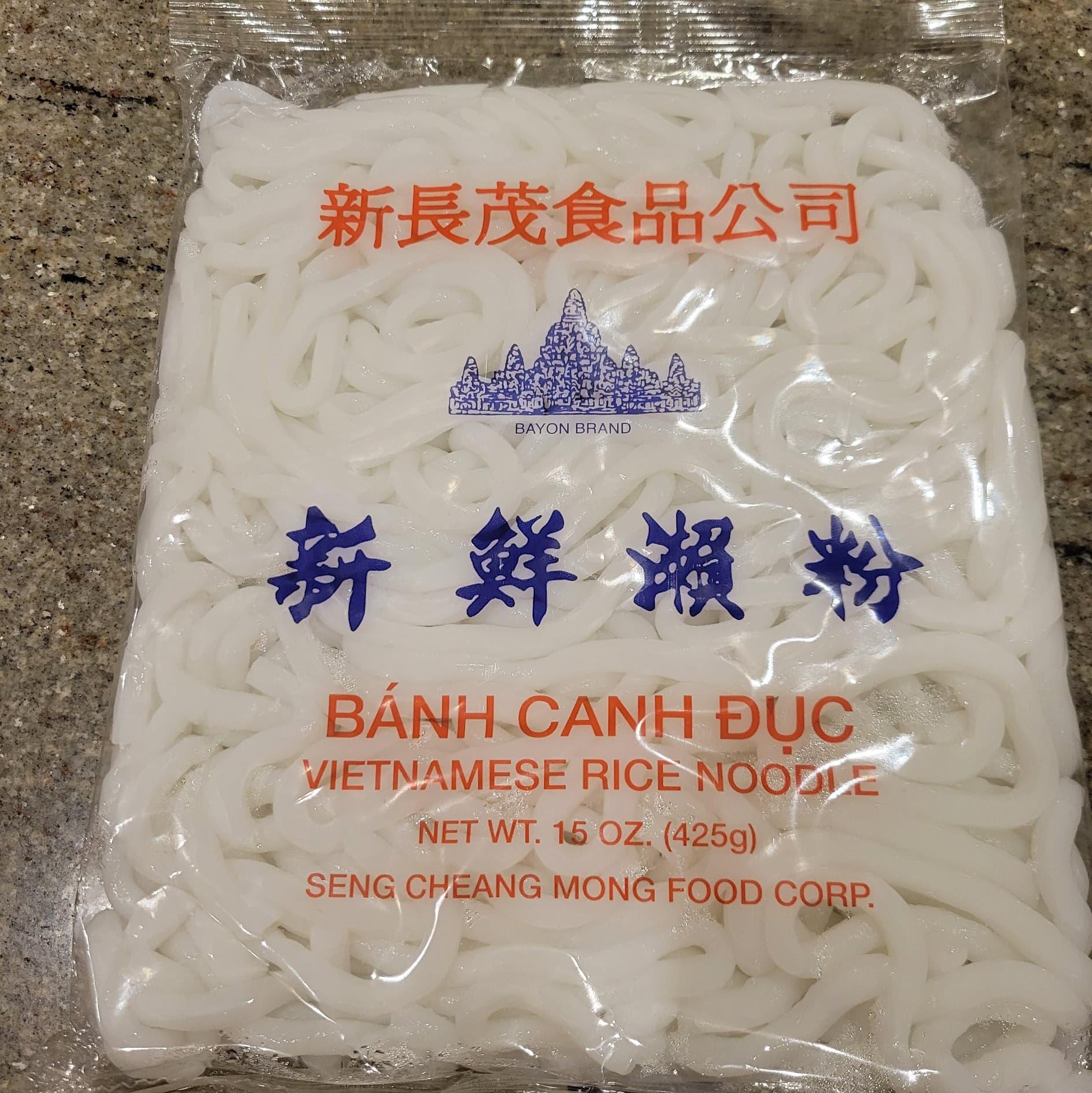Bánh canh is one of the most comforting and satisfying Vietnamese soups out there. Although “bánh” generally refers to cookies, crackers, or sweets; in this case it is refering to the noodle (FYI, canh means soup, generally with a more clear broth). In contrast to wheat flour noodles used to make Japanese udon, these noodles are generally made of either rice flour, tapioca flour, or a mixture of both. What results is a thicker, springier, and chewy noodle texture; while the extra starchiness helps to absorb delicious broth flavor.
Speaking of the broth, this one is a pork-based broth that brings a rich, flavorful, and savory broth with every slurp. This is made possible by simmering pork bones for about 2.5 hours to extract all the amazing pork flavors. The broth is further enriched with the addition of oven-roasted shallots and a pork stock soup base. While any pork bone can do, I highly recommend the use of pork spare ribs to make the stock, as the meat becomes extremely soft and tender during the simmering process. Although not as well-known as phở, bánh canh is definitely a comforting soup that will satisfy you!Ingredients (for approx 15 bowls, scale as needed)For Broth–5 lbs pork spare ribs–2 gallons (approx 7.5L) of water–5 large shallots, cut in half–3 Tbsp table salt–4 Tbsp granulated sugar–2 tsp fish sauce–2 Tbsp of Quoc Viet pork soup baseRecommended Toppings–Bánh canh noodles (approx 1/2 lb per bowl)–Pork spare ribs (from simmering broth)–Cha Lua (Vietnamese pork ham); cut into 1/4 inch slices–Fish balls–Shrimp–Satay Sa Oc (Vietnamese Lemongrass Sate Sauce)–Chopped green onion–Chopped cilantro–Roasted minced garlic
ProcedureParboiling Pork Spare Ribs1) Add water to a large pot and bring to a boil (add enough water to be able to submerge bones)2) Once boiling, carefully add pork spare ribs into the water3) Allow pork to boil in water for about 5 minutes to clean up and remove impurities4) Pour out contents of pot into a colander to drain water from the pork5) Run cold water through the pork bones to stop the cooking process and clean off more impuritiesRoasting Shallots1) Pre-heat oven to 400°F2) Slice shallots in half and remove skin. Place on a parchment paper lined baking sheet3) Roast at 400°F for 25 minutes4) Remove from oven and remove burnt layers from the onions and shallotsBánh Canh Noodle PreparationThis recipe uses packaged pre-made noodles. Follow package instructions which generally consists of:1) Bring a pot of water to a boil2) For each bowl, add approx 1/2 a package (about 1/2 lb of noodles) to the boiling water3) When noodles float to the top of the water, remove noodles from the pot with a strainer and shake out excess moisture4) Place into a bowl for prepare for servingSoup Stock Preparation1) Add two gallons of water into a large pot, making sure there is enough room to add extra ingredients without overflowing.2) Bring water to a boil. Add parboiled pork spare ribs and roasted shallots to the pot.3) Once the water comes to a boil again after adding ribs and shallots, reduce heat down so that the broth goes to a gentle simmer (low to medium-low heat)4) Simmer the broth for 2.5 hours, occasionally skimming the top of the broth to remove the frothiness and keep the broth clear.5) After 2.5 hours, remove the roasted shallots from the pot6) Add table salt, sugar, fish sauce, and pork soup base to the pot and stir to mix.7) Turn off heat and serve with the bánh canh and your favorite toppingsObservations-For those who CANH handle the spice, I also recommend adding a little satay chili paste in each bowl to add a little kick and some vibrant reddish-orange color to the broth.-Parboiling the spare ribs prior to making the broth is essential to keeping the broth clear as well as removing the “impurities” and pork smell from the meat.



